 W
WThe Battle of Ankara or Angora was fought on 20 July 1402 at the Tchubuk plain near Angora between the forces of the Ottoman Sultan Bayezid I (Bajazet) and Timur (Tamerlane), ruler of the Timurid Empire. The battle was a major victory for Timur, and it led to a period of crisis for the Ottoman Empire.
 W
WStefan Lazarević, also known as Stefan the Tall, was the ruler of Serbia as prince (1389–1402) and despot (1402–1427). The son of Prince Lazar Hrebeljanović, he was regarded as one of the finest knights and military leaders at that time. After the death of his father at Kosovo (1389), he became ruler of Moravian Serbia and ruled with his mother Milica, until he reached adulthood in 1393. Stefan led troops in several battles as an Ottoman vassal, until asserting independence after receiving the title of despot from the Byzantines in 1402.
 W
WZaharija Pribislavljević or Zaharija of Serbia was Prince of the Serbs from 922 to 924. He defeated his cousin Pavle in 922. Zaharija was the son of Pribislav, the eldest son of Mutimir of the first Serbian dynasty.
 W
WIn the Byzantine civil war which began in 1352, John Palaiologos obtained the help of Serbia, while John Kantakouzenos sought help from Orhan I, the Ottoman bey. Kantakouzenos marched into Thrace to rescue his son, Matthew, who was attacked by Palaiologos shortly after being given this appanage and then refusing to recognize John Palaiologos as heir to the throne.
 W
WAccording to the dubious Chronicle of the Priest of Duklja, a Magyar leader named Kisa led an invasion into Bosnia, where he was decisively defeated by Časlav, the Prince of Serbia, somewhere on the Drina. Kisa's widow requested from the Magyar chief to give her another army to avenge his death. With an "unknown number" of troops, the widow went for Časlav, encountering him somewhere in Syrmia. In the night, the Magyars attacked the Serbs, captured Časlav and all of his male relatives. On the command of the widow, all of them were bound by their hands and feet and thrown into the Sava river. Vladimir Ćorović dates this event to c. 960.
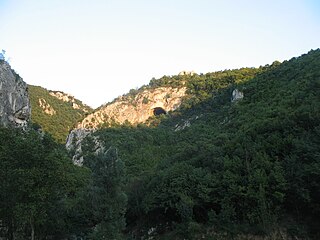 W
WThe Battle of Dubravnica was fought in the summer of 1380 or December 1381, on the Dubravnica River near Paraćin in today's central Serbia, between the Serbian forces of Prince Lazar of Serbia led by commanders Vitomir and Crep and the invading Ottoman Turks of Sultan Murad I. Vitomir and Crep were the regional lords, and one of their fortresses, Petrus, was in the vicinity of the battle.
 W
WThe Battle of Gallipoli was fought at the end of 1312 or in 1313, between the Byzantines and the Turcopoles led by Halil Pasha. For two years, Thrace was occupied by Halil Pasha. Earlier, Byzantine Emperor Michael IX Palaiologos had raised an army which defeated the Turcopoles, and confined them to a fortified camp in the Gallipoli peninsula. These Turcopoles numbered less than 2,000. Michael next asked assistance from his son-in-law, Serbian King Stefan Milutin, and received a 2,000-strong Serbian cavalry troop. Milutin had earlier subdued the Turcopoles that took refuge in Serbia. The Byzantine and Genoese ships completed the blockade, the Genoese preventing the Turcopoles from escaping by sea. The Turcopoles first made unsuccessful attempts at breaking free, but decided to surrender to the Genoese, thinking they would not be harsh. However, in the night, by mistake, many Turcopoles fell into the hands of the Byzantines, who slaughtered them and took their belongings. The Genoese executed only those Turcopoles that had many valuables, so they could not get into the hands of the Byzantines, and the rest they sold as slaves. Halil and his men were all massacred. The Serbian contingent took share in the spoils. The Turcopoles had heavy casualties, with few survivors returning to Byzantine service, though little is heard of them afterwards. The victory was made a poem by Manuel Philes. In two chrysobulls of Andronikos II Palaiologos to the Serbian Hilandar monastery, dating to October 1313 and July 1317, he showed gratitude to Stefan Milutin for his aid, as detailed in the prefaces.
 W
WThe Battle of Haram or Chramon was fought between the forces of King Stephen II of Hungary and Emperor John II Komnenos of the Byzantine Empire in the year 1128, or possibly earlier – in 1125, in what is now Serbia, and resulted in a major defeat for the Hungarians.
 W
WThe Battle of Kosovo took place on 15 June 1389 between an army led by the Serbian Prince Lazar Hrebeljanović and an invading army of the Ottoman Empire under the command of Sultan Murad Hüdavendigâr. The battle was fought on the Kosovo field in the territory ruled by Serbian nobleman Vuk Branković, in what is today Kosovo, about 5 kilometers (3.1 mi) northwest of the modern city of Pristina. The army under Prince Lazar consisted of his own troops, a contingent led by Branković, and a contingent sent from Bosnia by King Tvrtko I, commanded by Vlatko Vuković. Prince Lazar was the ruler of Moravian Serbia and the most powerful among the Serbian regional lords of the time, while Branković ruled the District of Branković and other areas, recognizing Lazar as his overlord.
 W
WThe Second Battle of Kosovo was a land battle between a Hungarian-led Crusader army and the Ottoman Empire at Kosovo Polje. It was the culmination of a Hungarian offensive to avenge the defeat at Varna four years earlier.
 W
WThe Battle of Kunovica or Battle at Kunovitsa was the battle between crusaders led by John Hunyadi and armies of the Ottoman Empire which took place on 2 or 5 January 1444 near mountain Kunovica between Pirot and Niš.
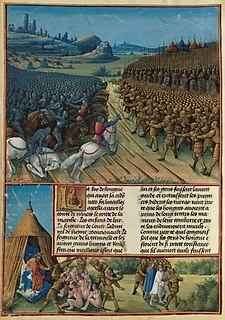 W
WThe Battle of Nicopolis took place on 25 September 1396 and resulted in the rout of an allied crusader army of Hungarian, Croatian, Bulgarian, Wallachian, French, Burgundian, German, and assorted troops at the hands of an Ottoman force, raising the siege of the Danubian fortress of Nicopolis and leading to the end of the Second Bulgarian Empire. It is often referred to as the Crusade of Nicopolis as it was one of the last large-scale Crusades of the Middle Ages, together with the Crusade of Varna in 1443–1444.
 W
WThe Siege of Novo Brdo was a military blockade of Novo Brdo, an important fortified mining town in the Serbian Despotate, by the forces of the Ottoman Empire. The siege began in 1440 and lasted until the capture of the fortress on 27 June 1441. During the siege, the Serbian garrison was supported by the local community of citizens of the Republic of Ragusa.
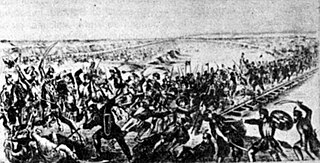 W
WThe Battle of Rovine took place on 17 May 1395. The Wallachian army led by Voivod Mircea cel Bătrân opposed the Ottoman invasion personally led by Sultan Bayezid I the Lightning. The Turkish force heavily outnumbered the Wallachian troops. The legend says that on the eve of the battle, dressed as a peace emissary, Mircea cel Bătrân talked to Bayezid asking him to leave Wallachia and promising him safe passage back. The Sultan proudly insisted on fighting.
 W
WThe Battle of Savra or the Battle of the Vjosë was fought on 18 September 1385 between Ottoman and much smaller Zetan forces, at the Savra field near Lushnjë. The Ottomans were invited by Karlo Thopia to support him in his feud against Balša II.
 W
WThe Battle of Sirmium, Battle of Semlin or Battle of Zemun was fought on July 8, 1167 between the Byzantine Empire, and the Kingdom of Hungary. The Byzantines achieved a decisive victory, forcing the Hungarians to sue for peace on Byzantine terms. The battle consolidated Byzantine control of the western Balkans.
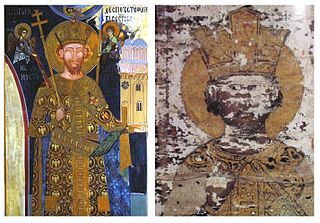 W
WThe Battle of Tripolje, also known as the Battle of Gračanica, was fought in November 1402 between the Serbian Despotate, ruled by the Lazarević dynasty, and the Branković family, aided by the Ottoman Empire.
 W
WThe Battle of Trnava or Battle of Nagyszombat was a battle in the Hussite Wars between the Hussites and the Hungarian-Royalists-Serbian army near Trnava (Nagyszombat) in the Kingdom of Hungary. The battle was fought in three phases, on 23, 25 and 28 April 1430 and ended in Hussite victory.
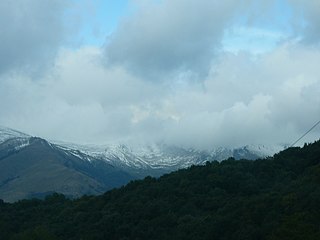 W
WThe Battle of Zlatitsa was fought on 12 December 1443 between the Ottoman Empire and Serbian Hungarian troops in the Balkans. The battle was fought at Zlatitsa Pass near the town of Zlatitsa in the Balkan Mountains, Ottoman Empire. The impatience of the king of Poland and the severity of the winter then compelled Hunyadi to return home, but not before he had utterly broken the Sultan's power in Bosnia, Herzegovina, Serbia, Bulgaria, and Albania.